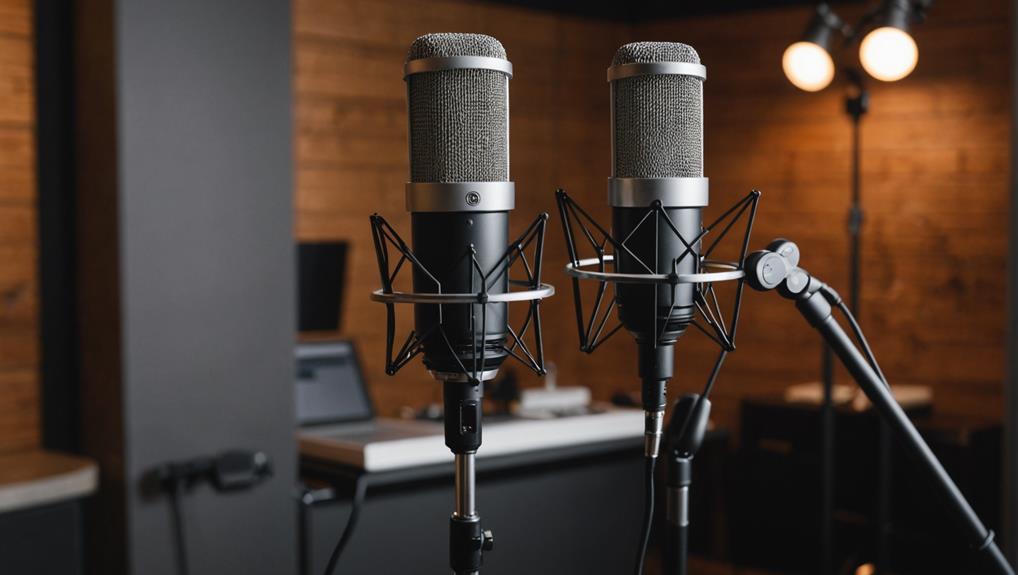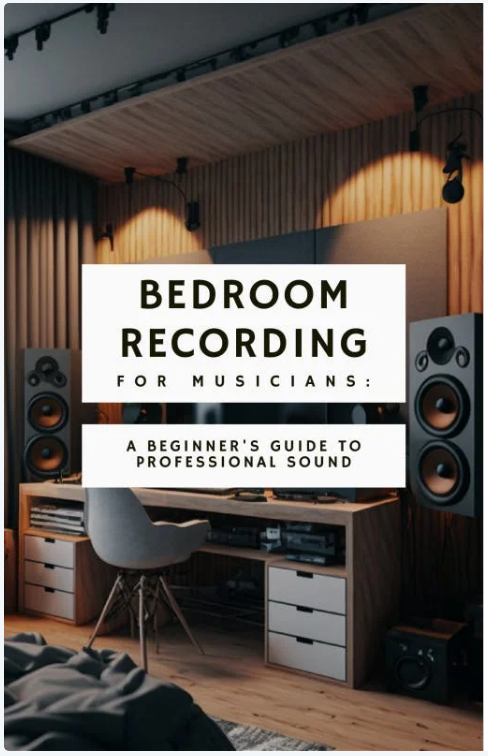Choosing the right microphone—dynamic or condenser—can greatly impact your podcast's audio quality. Dynamic microphones are durable and excel in untreated spaces, reducing background noise, making them perfect for on-the-go recordings. On the other hand, condenser microphones capture detailed sound nuances and are ideal for acoustically treated environments. They bring out subtle qualities in voices, enhancing overall production value. Your choice should depend on your recording environment and desired sound quality. Want to find out more about which mic suits your needs best? There's plenty more to explore that can help you with your decision.
Key Takeaways
- Dynamic microphones are ideal for untreated environments, minimizing background noise and providing clear recordings.
- Condenser microphones capture high-frequency sounds and subtle nuances, enhancing audio quality in acoustically treated spaces.
- Selecting a microphone type should consider the recording setting and desired sound quality for podcasts.
- Dynamic mics are plug-and-play, making them accessible for beginners without the need for phantom power.
Overview of Microphone Types
When choosing a microphone for your podcast, understanding the differences between dynamic and condenser types is vital for achieving the best sound quality in your recording environment.
Dynamic microphones are constructed using electromagnetic principles, making them durable and well-suited for high sound pressure levels. They excel in untreated spaces, effectively rejecting background noise due to their lower sensitivity. This makes them a popular choice for live settings and podcasts recorded in less-than-ideal acoustics.
On the other hand, condenser microphones utilize a capacitor mechanism and require phantom power to operate. They're known for their high sensitivity, capturing detailed sound nuances, which is ideal for controlled studio environments. However, this sensitivity also means they can pick up ambient noise, making them less effective in noisy settings.
When selecting between these microphone types, consider your recording environment and the desired audio quality. Dynamic microphones often connect via XLR cables, while some condenser models are available in USB formats, offering versatility.
Understanding the polar pattern of each mic is also significant, as it dictates how sound is captured from different directions—an important factor in podcasting.
Benefits of Dynamic Microphones
Dynamic microphones offer several advantages that make them an excellent choice for podcasters seeking reliable and clear audio quality.
First, they're generally more affordable than condenser microphones, making them accessible for beginners or anyone on a budget. Their robust design guarantees durability, allowing them to withstand rough handling during recording sessions.
Here are some key benefits of dynamic microphones:
- Less sensitive to background noise: This feature enables you to achieve clear recordings even in untreated acoustic environments, minimizing unwanted sound.
- High sound pressure levels: They're capable of handling loud sounds, making them suitable for various settings, including live events.
- Plug-and-play functionality: You won't need external power sources, which simplifies setup across different recording devices.
Advantages of Condenser Microphones
Condenser microphones shine in capturing the subtle nuances of sound, making them a top choice for podcasters who want to enhance their audio quality in controlled recording environments. Their high sensitivity allows you to pick up every detail of your voice, resulting in a more engaging and polished podcast.
With a wide frequency response, condenser microphones deliver a transparent sound that enhances the conversational tone, essential for keeping your audience's attention. The low mass diaphragm of these mics guarantees quick movement in response to sound waves, which translates into superior sound quality.
They excel at capturing high-frequency sounds, providing clarity that can elevate your podcast's overall production quality. Many condenser microphones also come equipped with features like high-pass filters and -15 dB attenuators, helping to manage background noise and improve sound clarity during recordings.
While they tend to be a more significant investment compared to dynamic microphones, the enhanced audio quality makes it a worthwhile choice. By opting for a quality condenser microphone, you're not just investing in equipment; you're investing in a professional sound that can set your podcast apart.
Key Differences Between Mics
Understanding the key differences between microphones is essential for making the right choice for your podcasting needs. When deciding between condenser and dynamic mics, consider the following points:
- Sound Quality: Condenser mics generally offer superior sound quality, capturing a broader frequency range and high-frequency sounds better.
- Background Noise: Dynamic mics are less sensitive to background noise, making them ideal for untreated environments. If you're recording a podcast in a noisy area, they might be your best bet.
- Phantom Power: Condenser microphones require phantom power to operate, while dynamic mics are 'plug and play,' which adds convenience for beginners.
Choosing the appropriate microphone can greatly impact your podcast's overall quality.
If you're looking for durability and affordability, dynamic mics are a solid choice.
However, if you're aiming for higher sensitivity and detailed sound quality in a controlled environment, consider investing in a condenser mic.
Choosing the Right Microphone
When you're selecting a microphone for your podcast, it's important to match its characteristics with your recording environment and goals.
If you're recording in untreated environments, dynamic microphones are generally your best bet. They've a lower sensitivity to background noise, making them ideal for home setups where unwanted sounds can creep in. Popular choices like the Shure SM58 and Rode PodMic are durable and versatile, perfect for various situations.
On the other hand, if you're aiming for superior sound quality and have access to an acoustically treated space, consider using condenser microphones. They excel in quiet recording contexts but can pick up ambient noise and echoes, which mightn't be desirable in a podcasting setting.
Also, think about the type of connection you need. USB mics offer convenience for beginners, allowing for easy plug-and-play functionality. However, if you're looking for higher quality and flexibility, investing in an XLR microphone is the way to go.
Ultimately, your choice should reflect your recording context and the sound quality you aim to achieve.
Best Practices for Podcast Recording
To achieve the best sound quality in your podcast recordings, it's crucial to follow specific practices that enhance clarity and minimize unwanted noise. Here are some best practices to keep in mind:
- Position your microphone 2 to 12 inches away from your mouth to improve voice clarity and reduce background noise.
- Use pop filters to minimize plosive sounds, like 'p' and 'b,' ensuring your audio stays crisp and clear.
- Implement shock mounts to prevent low-frequency vibrations from handling the microphone, which helps capture cleaner sound during recordings.
Testing different microphones, especially dynamic microphones, can reveal which works best in your recording environment.
Dynamic mics are generally recommended for untreated spaces due to their lower sensitivity to background noise.
Additionally, using an audio interface can further enhance your sound quality by providing better connectivity and control over your recording setup.


